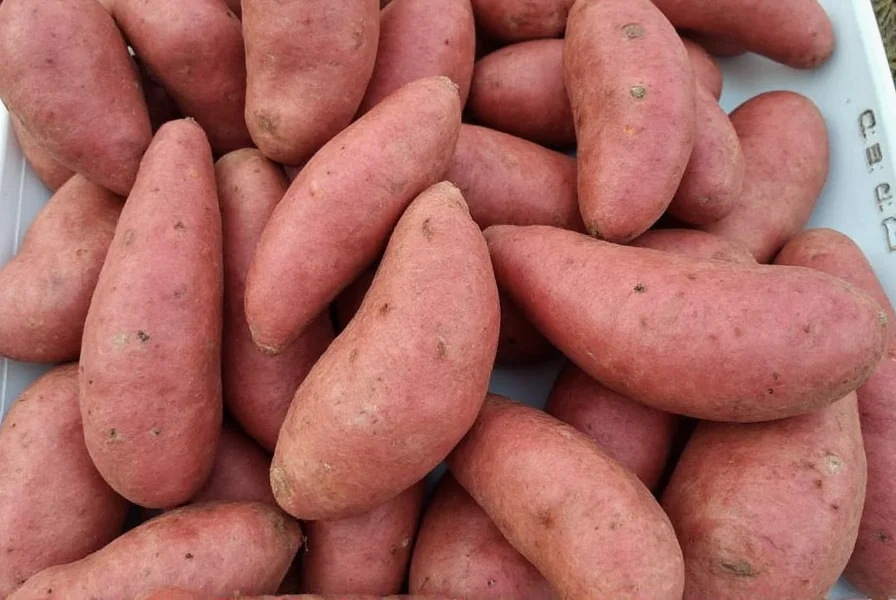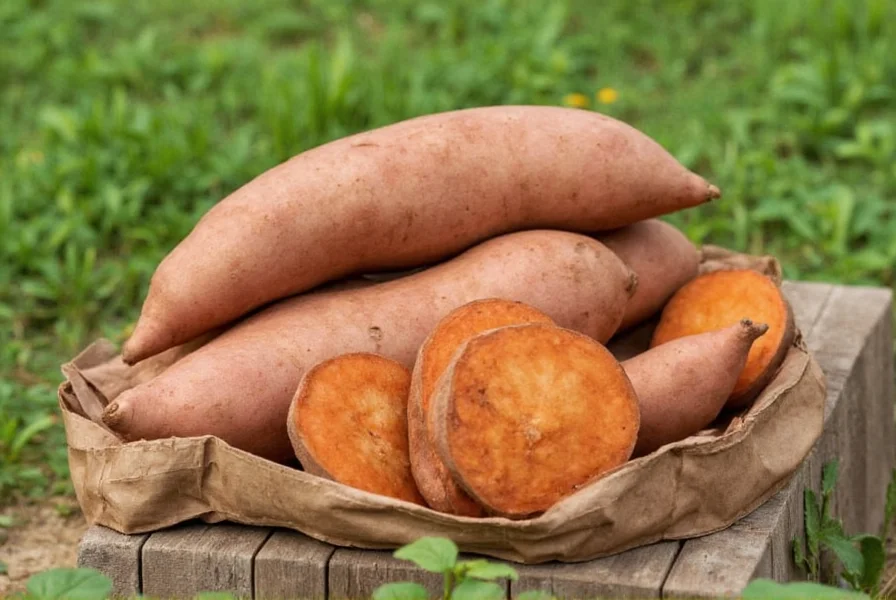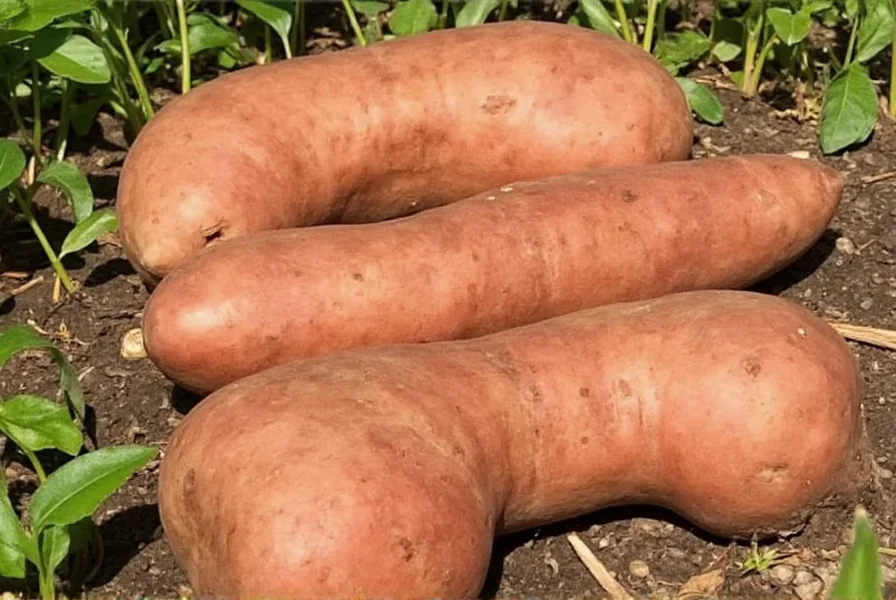When gardeners and farmers search for cinnamon jack sweet potato characteristics, they're typically seeking reliable information about this increasingly popular cultivar. Unlike generic sweet potato varieties, Cinnamon Jack delivers consistent performance in both commercial agriculture and home gardening settings. Its distinctive features make it stand out in markets where consumers increasingly demand flavorful, nutrient-dense root vegetables.
Botanical Profile and Physical Characteristics
Cinnamon Jack sweet potatoes feature elongated tubers with smooth, copper-colored skin that gives way to bright orange flesh when harvested at peak maturity. The average mature tuber weighs between 12-16 ounces, though optimal growing conditions can produce specimens reaching 24 ounces. What truly distinguishes this variety is its exceptionally high beta-carotene content—approximately 30% greater than standard orange-fleshed sweet potatoes.

Growing Requirements for Optimal Yield
Successful cultivation of cinnamon jack sweet potatoes requires attention to specific environmental factors. These plants thrive in USDA hardiness zones 8-11 but can be grown as annuals in cooler regions with proper planning. The ideal soil pH ranges from 5.8 to 6.5, with excellent drainage being critical to prevent root rot.
Planting should occur after soil temperatures consistently reach 65°F (18°C), typically 3-4 weeks after the last frost date. Gardeners practicing how to grow cinnamon jack sweet potatoes successfully recommend spacing slips 12-18 inches apart in rows 36-42 inches apart. The vines require approximately 90-100 days to reach full maturity, though many growers harvest slightly earlier for more delicate flavor profiles.
| Growing Factor | Optimal Range for Cinnamon Jack | Notes |
|---|---|---|
| Soil Temperature | 65-85°F (18-29°C) | Plant when consistently above 65°F |
| Soil pH | 5.8-6.5 | Avoid alkaline conditions |
| Growing Season | 90-100 days | From planting to harvest |
| Water Requirements | 1-1.5 inches/week | Reduce watering 2 weeks before harvest |
Nutritional Benefits and Culinary Applications
The cinnamon jack sweet potato nutritional benefits make it particularly valuable in health-conscious diets. Each serving provides 400% of the recommended daily intake of vitamin A, along with significant amounts of vitamins B6, C, and manganese. Its natural sweetness comes with a moderate glycemic index of 63, making it more suitable for blood sugar management than many other starchy vegetables.
Chefs appreciate Cinnamon Jack for its versatility in the kitchen. When roasted at 400°F (204°C), the natural sugars caramelize beautifully, creating complex flavor notes that work equally well in savory dishes and desserts. Unlike some sweet potato varieties that become watery when cooked, Cinnamon Jack maintains excellent texture integrity, making it ideal for soups, stews, and casseroles.

Comparison with Other Sweet Potato Varieties
Understanding the differences between cinnamon jack vs other sweet potato varieties helps growers and consumers make informed choices. While traditional varieties like Beauregard dominate commercial production, Cinnamon Jack offers several distinctive advantages:
- Disease resistance: Shows superior resistance to fusarium wilt and sweet potato scurf compared to Beauregard
- Flavor profile: Higher sugar content (22% Brix) versus 18% in standard varieties
- Storage capability: Maintains quality for 4-6 months under proper storage conditions
- Yield consistency: Produces uniform tubers with minimal culling required
Commercial growers report 15-20% higher marketable yields with Cinnamon Jack compared to older varieties, primarily due to its consistent shape and reduced susceptibility to common field diseases. Home gardeners appreciate its adaptability to container growing, with many successfully cultivating this variety in 5-gallon pots when provided with proper support for the vines.
Harvesting and Storage Best Practices
Timing your cinnamon jack sweet potato harvest time correctly is crucial for optimal flavor development. The ideal harvest window occurs when soil temperatures remain above 55°F (13°C) but before the first hard frost. Many experienced growers use the "touch test"—gently brushing away soil to check tuber size—rather than relying solely on calendar dates.
After harvesting, proper curing significantly enhances both flavor and storage life. Cinnamon Jack sweet potatoes should be cured at 85-90°F (29-32°C) with 85-90% humidity for 5-7 days before transferring to long-term storage at 55-60°F (13-16°C). This curing process converts starches to sugars, developing the characteristic sweetness that makes this variety so popular.
Frequently Asked Questions
Is Cinnamon Jack a genetically modified sweet potato variety?
No, Cinnamon Jack is a conventionally bred sweet potato cultivar developed through selective breeding techniques. It is not genetically modified and meets all non-GMO certification standards. The variety was developed by cross-pollinating select parent plants with desirable traits over multiple generations.
How does Cinnamon Jack perform in cooler climate zones?
While Cinnamon Jack thrives in warm climates (zones 8-11), it can be successfully grown in cooler zones (5-7) with proper techniques. Gardeners in northern regions should start slips indoors 6-8 weeks before the last frost, use black plastic mulch to warm the soil, and consider growing in raised beds for better drainage and warmer soil temperatures. The growing season may be slightly shorter, but yields remain substantial with these adaptations.
What makes Cinnamon Jack sweeter than other sweet potato varieties?
Cinnamon Jack's exceptional sweetness comes from its higher concentration of soluble sugars and specific enzyme profiles that convert starches to sugars more efficiently during curing. With a Brix measurement of approximately 22% (compared to 18% in standard varieties), it naturally contains more maltose and sucrose. The variety's genetic makeup also promotes better sugar development when exposed to proper curing conditions after harvest.
Can Cinnamon Jack sweet potatoes be grown in containers?
Yes, Cinnamon Jack adapts well to container growing. Use containers with at least 5-gallon capacity and good drainage. Fill with a mix of potting soil and compost (2:1 ratio). Plant one slip per container and provide a trellis or support structure for the vines. Container-grown plants require more frequent watering and feeding but can produce excellent yields of 3-5 quality tubers per container when properly managed.
How long can properly stored Cinnamon Jack sweet potatoes maintain quality?
When properly cured and stored at 55-60°F (13-16°C) with 75-80% humidity, Cinnamon Jack sweet potatoes maintain excellent quality for 4-6 months. This storage longevity exceeds many traditional varieties due to the cultivar's thicker skin and superior disease resistance. Check stored tubers monthly and remove any showing signs of spoilage to prevent spread to other potatoes.











 浙公网安备
33010002000092号
浙公网安备
33010002000092号 浙B2-20120091-4
浙B2-20120091-4